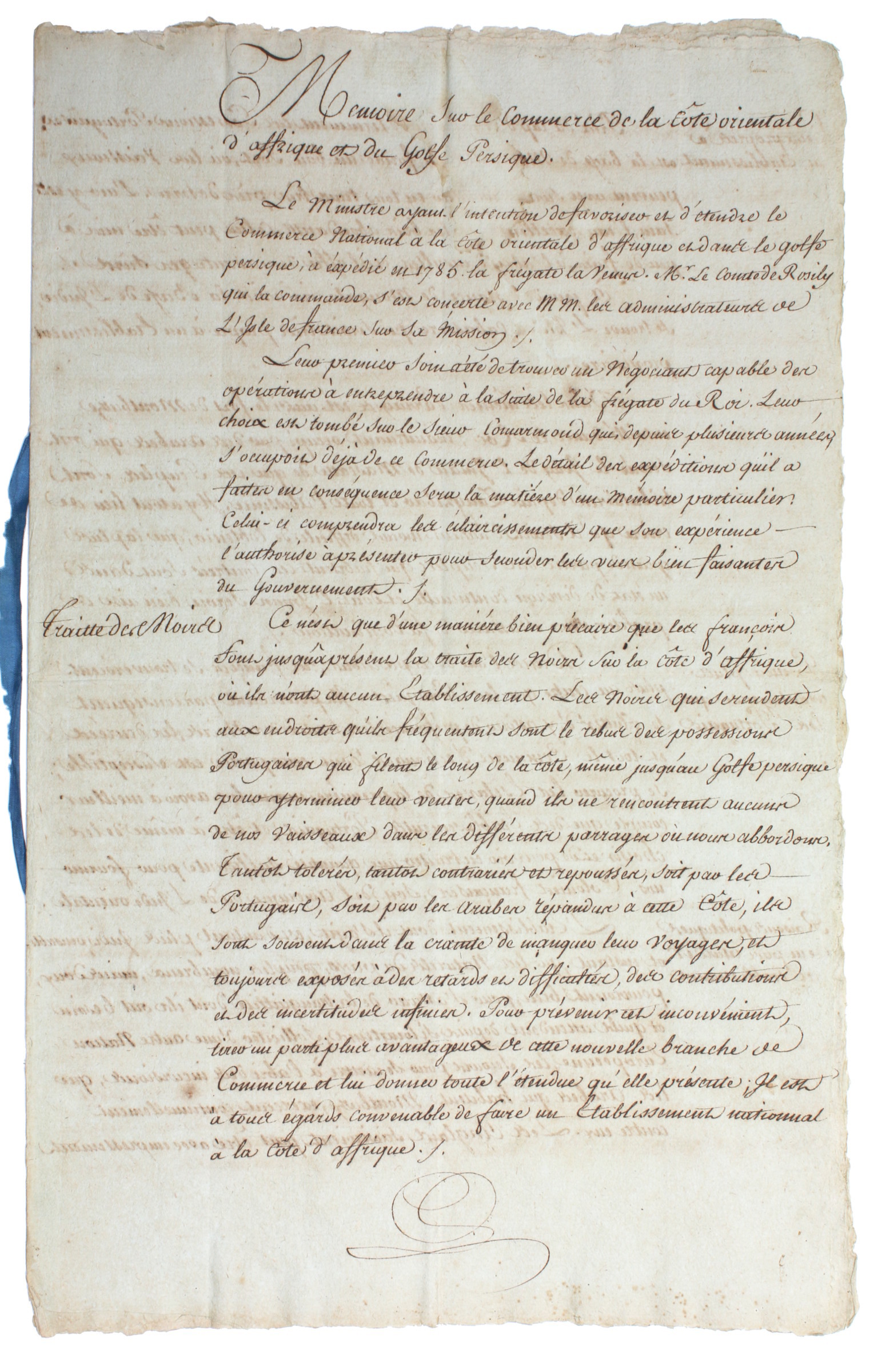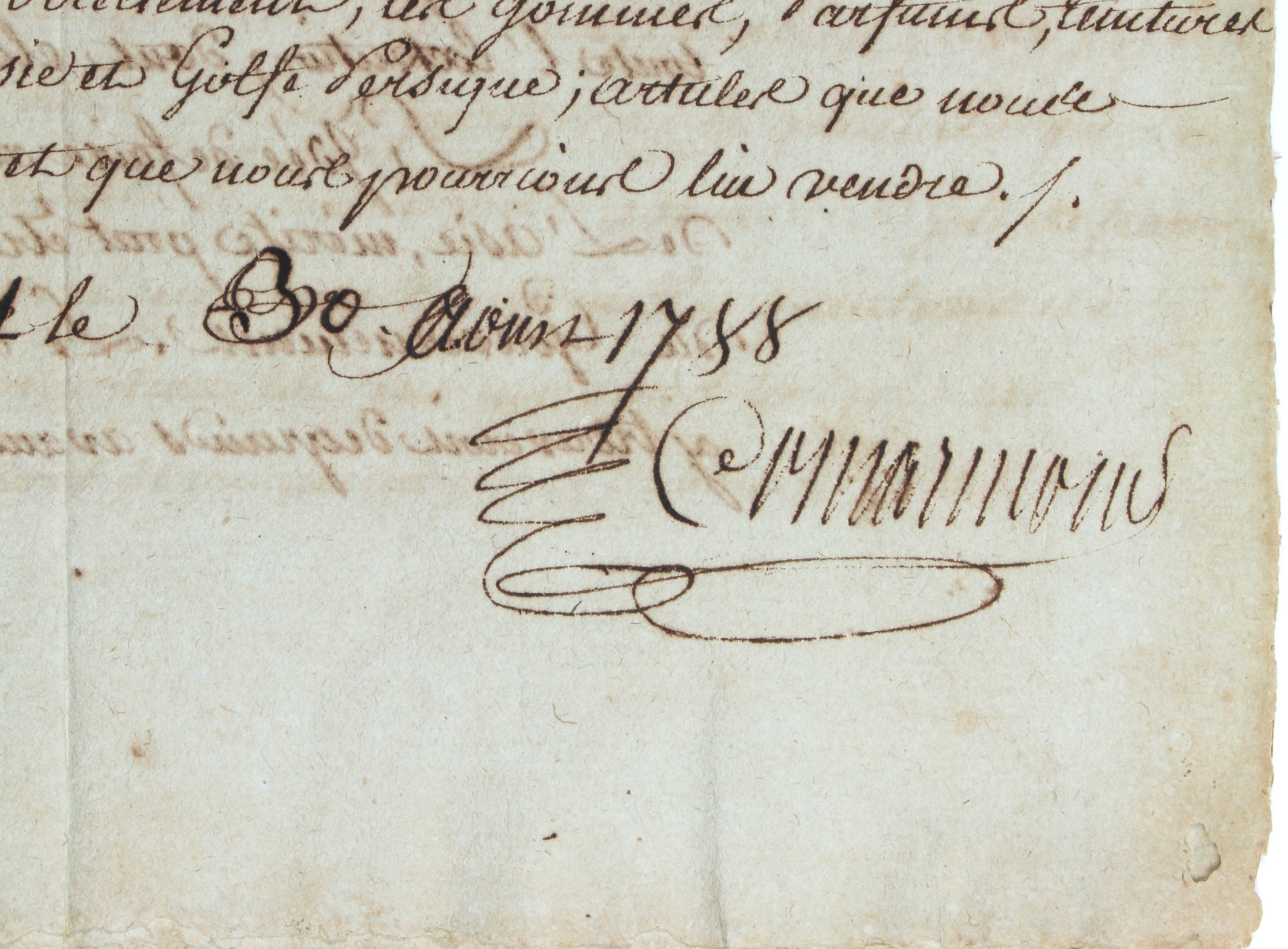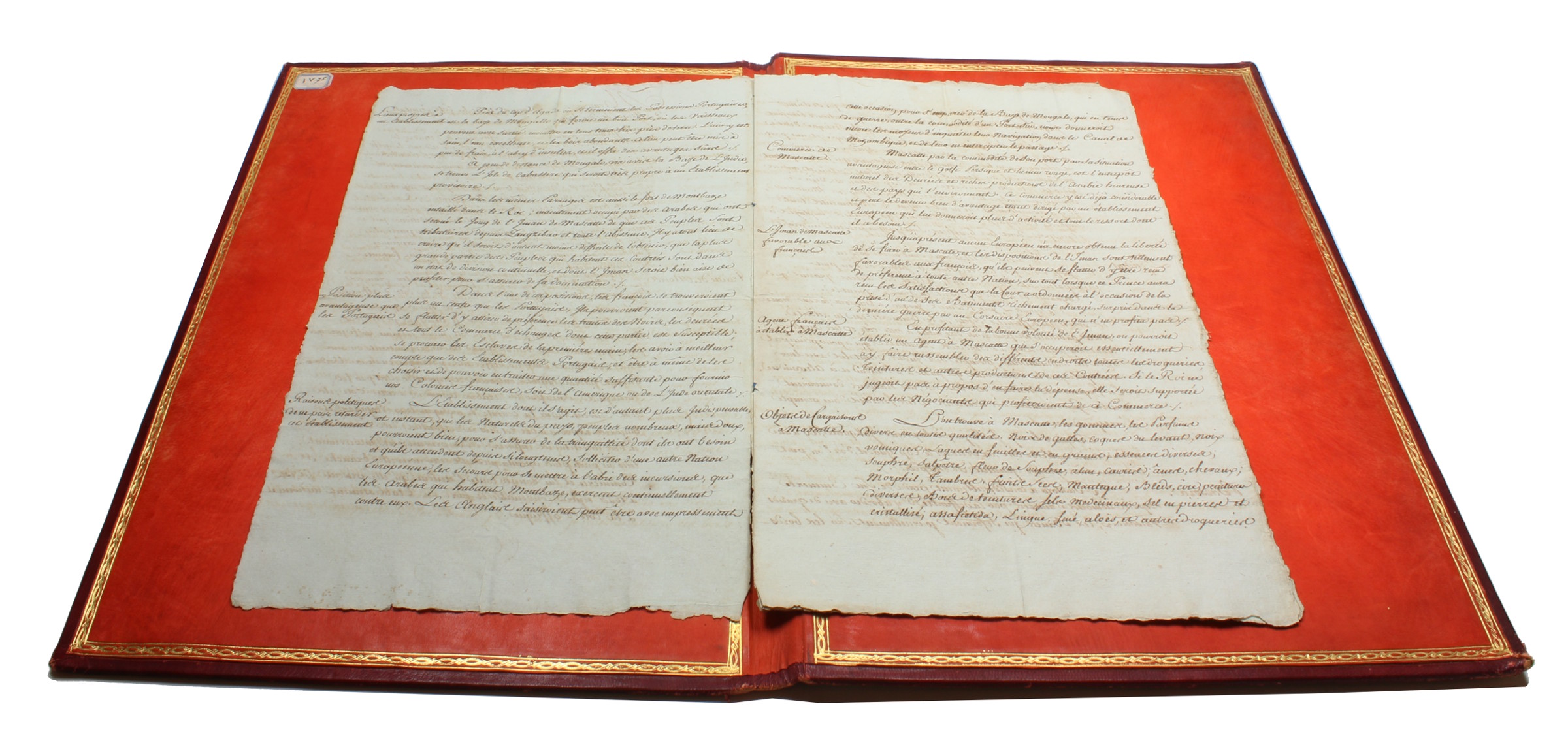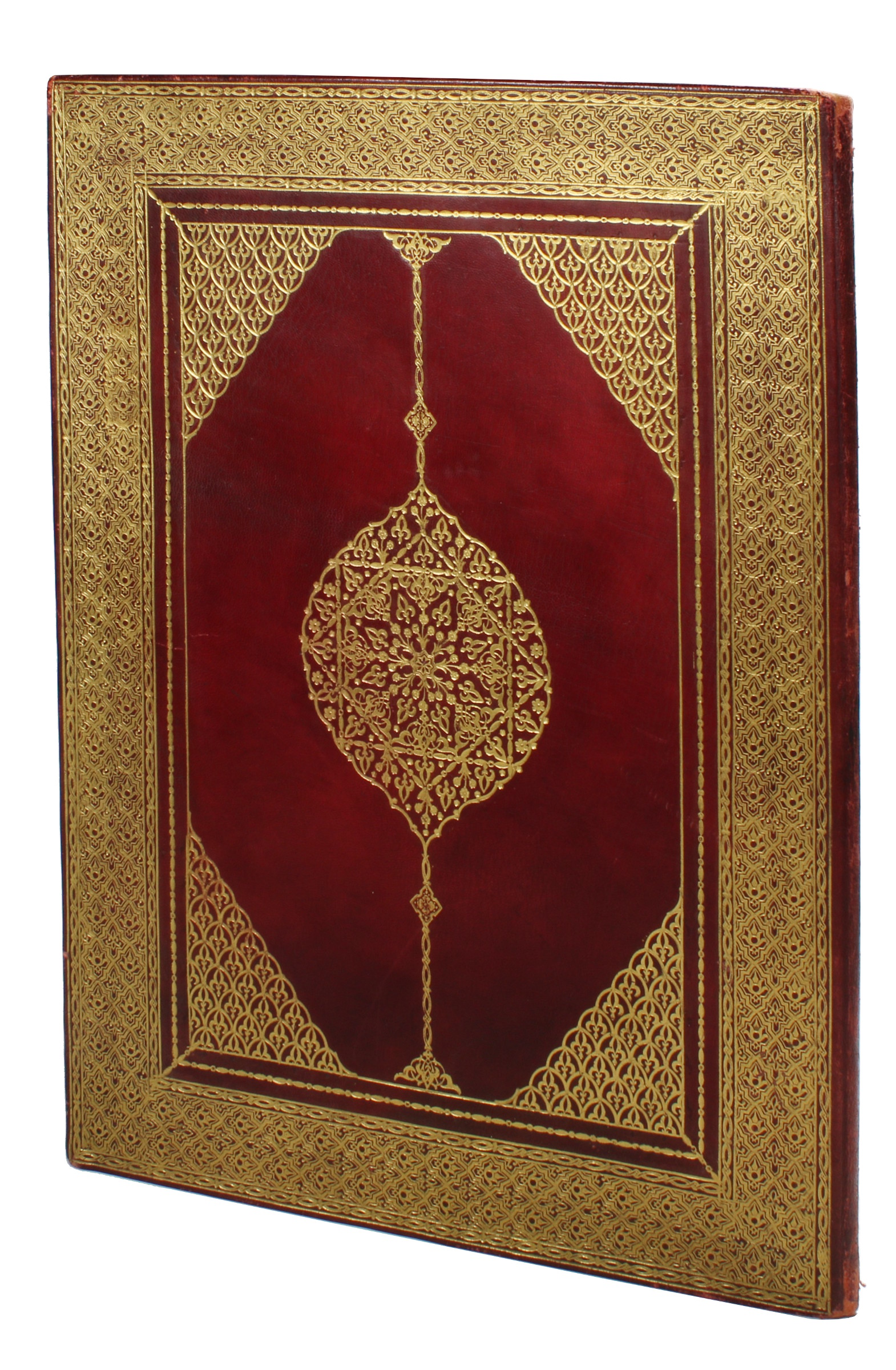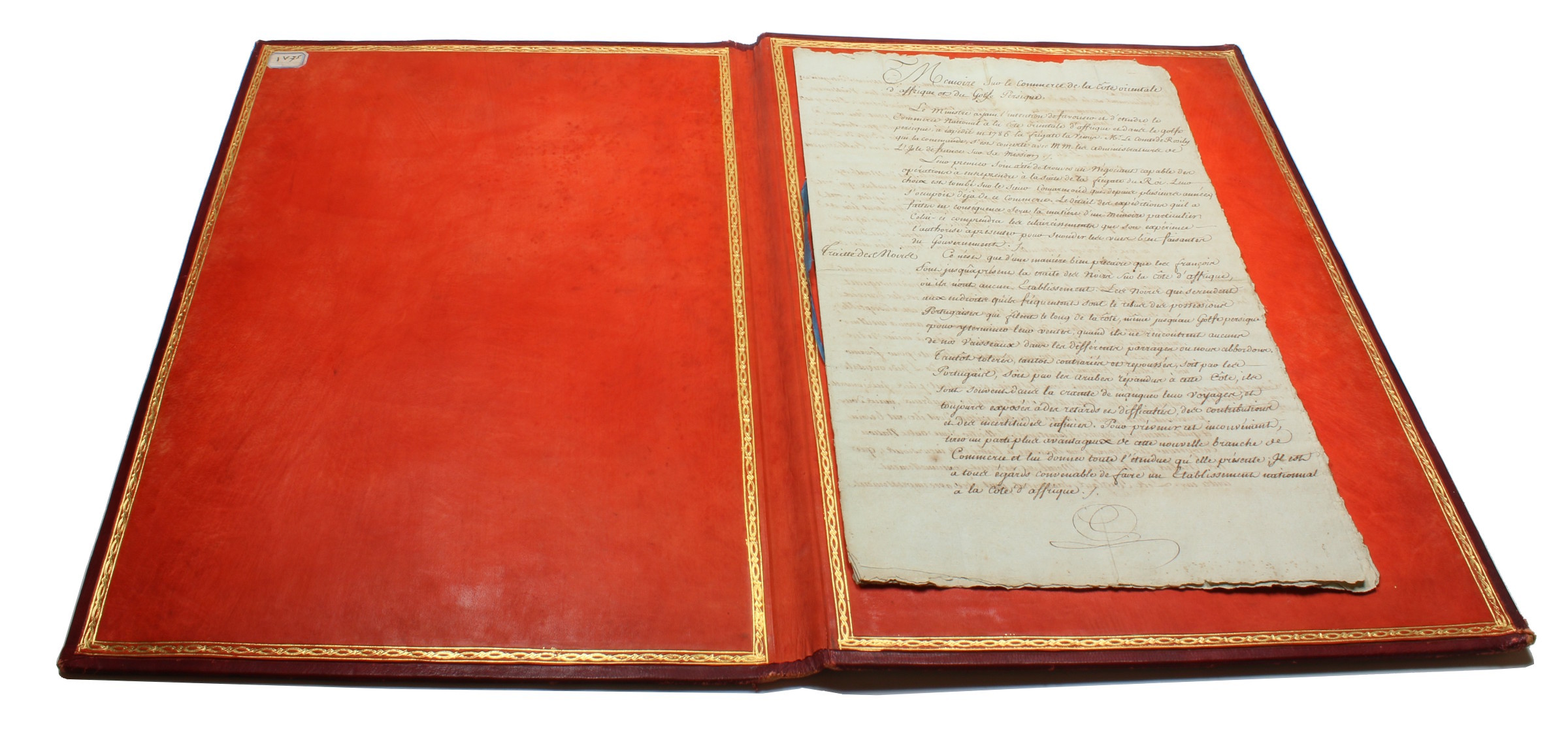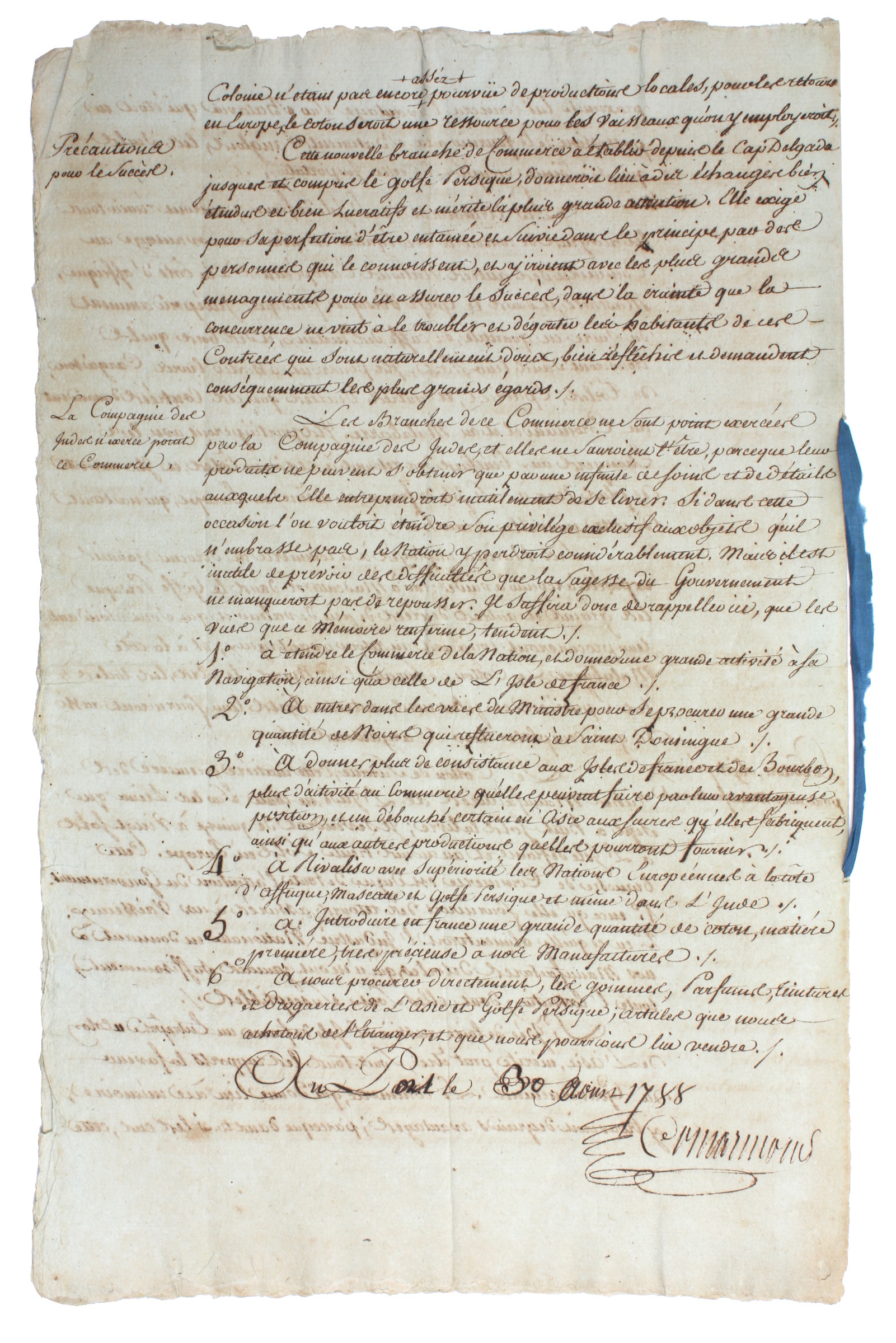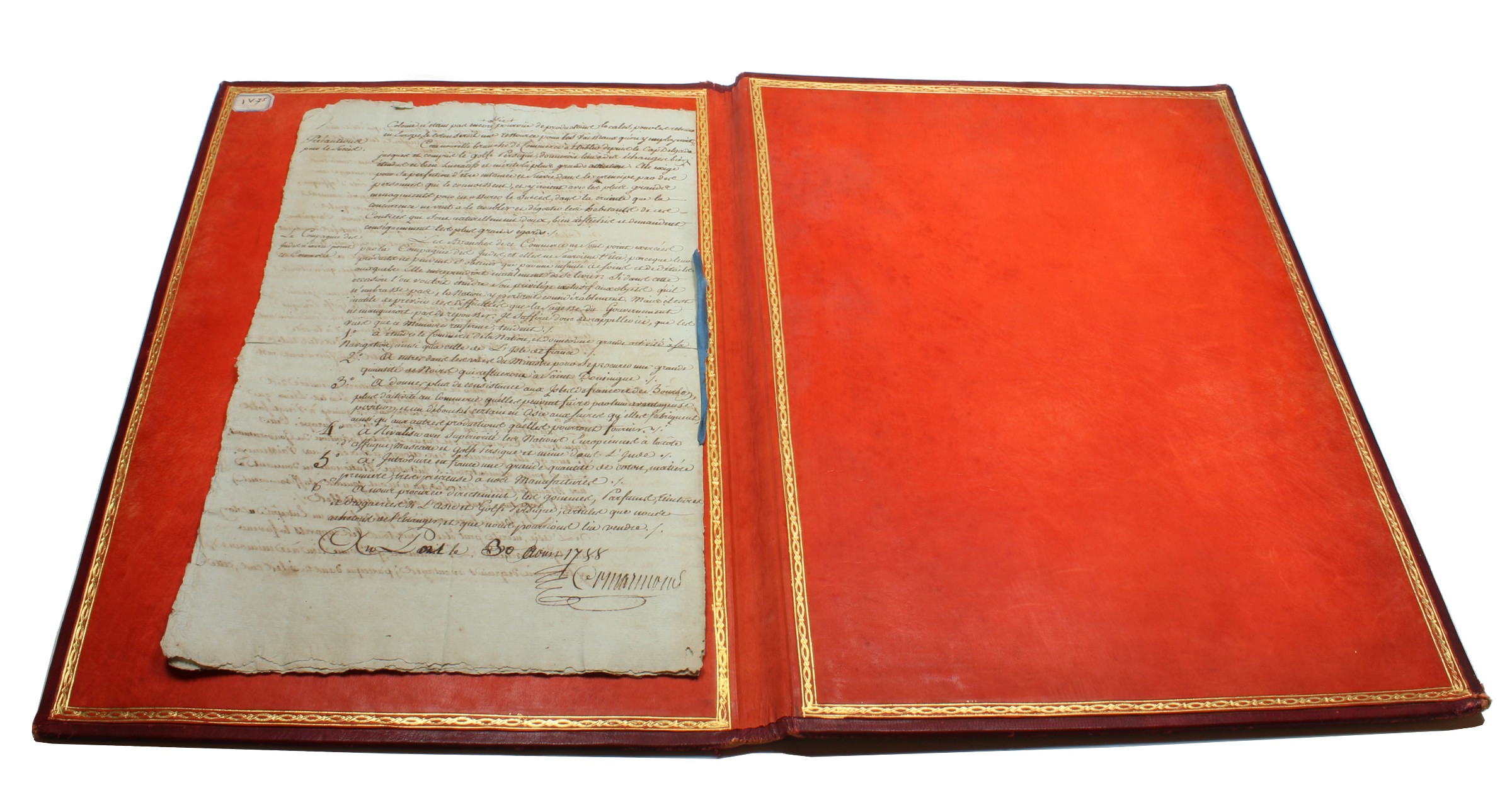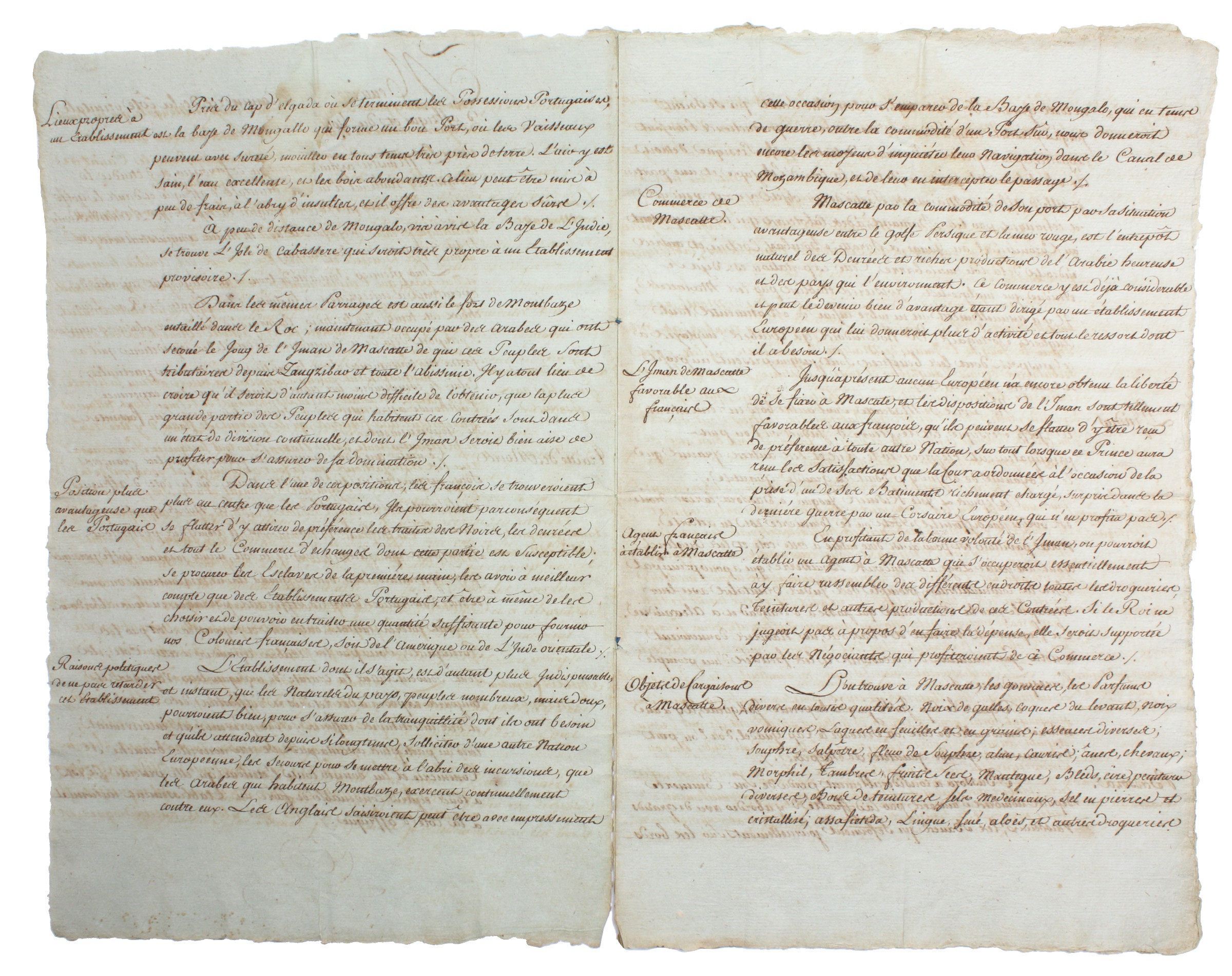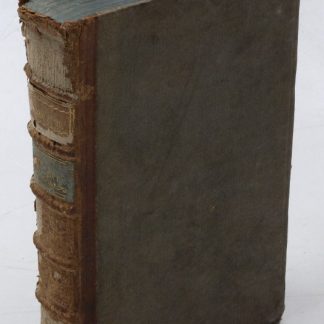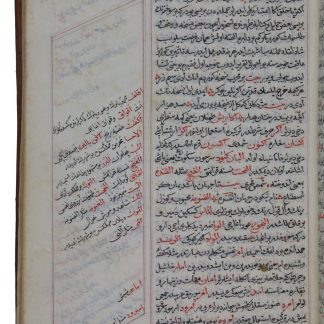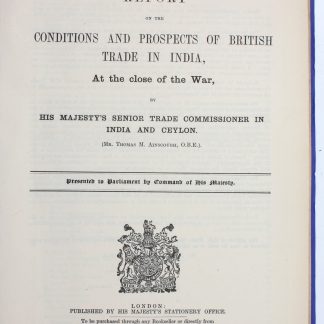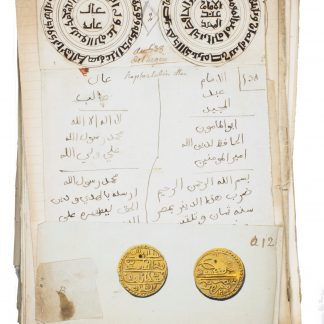"So far no European has yet obtained the freedom to settle in Muscat [...] The Arabs are the only ones so far occupied in this trade"
Mémoire sur le commerce de la côte orientale d’affrique et du Golfe Persique.
Folio (225 x 335 mm). 8 unnumbered pages, 30-35 lines. French manuscript in brown ink on watermarked laid paper, signed and dated by the author. Bound with a blue silk ribbon, loosely stored in a red morocco portfolio (405 x 300 mm) with elaborate giltstamped oriental decoration to upper cover, narrower gilt borders to lower cover, and gilt borders to both pastedowns, finished with a single piece of crimson-coloured calf.
One of the earliest primary source documents for the opening of Omani-French trade relations and for the history of Muscat and Oman in the 18th century, hitherto unpublished.
With Muscat becoming an increasingly important port for trade in the Indian Ocean under the rule of the Al Bu-Sa'id dynasty from 1749 onwards, the location quickly caught the attention of French colonial trade policy makers. Although France did not appoint its first consul in Muscat until 1894, Oman decided to grant France the right to appoint a diplomatic representative as early as 1786. It was only the previous year that the French merchant Comarmond, author of the present manuscript, set sail for Muscat on the French frigate 'Venus' to establish a French trade outpost, a mission he had been entrusted with by the French state and on the outcome of which he gives an extensive report in his present "Memoire".
Comarmond underlines the favourable geographical location of Muscat, the goodwill of Imam Hamad bin Said towards the French, and the various goods to be obtained by a trade agent, financed either by the French court or the merchants themselves: "Thanks to the convenience of its port and its advantageous position between the Gulf and the Red Sea, Muscat is the natural transshipment point for the food products and wealth of productions of Arabia Felix and the surrounding lands. This commerce is already considerable and could become even more so if it were conducted by a European establishment [...]. So far, no European has been allowed to settle in Muscat, and the Imam's dispositions are so favourable to the French that they may flatter themselves of there receiving preferential treatment compared to all other nations, especially once the Prince will have received the reparations ordered by the court following the prize of one of his richly loaded ships that was surprised by a European corsair [...]. In profiting from the goodwill of the Imam, it would be possible to install an agent in Muscat [...]. If the King decides against undertaking the necessary expenses, support will be forthcoming from the merchants who shall profit from this trade. One will find in Muscat: rubber, various perfumes in all quantities, oak gall, Levant nut, nux vomica, shellac in leaves and grains, diverse essences, sulphur, saltpeter, powdered sulphur, alum, cowries, donkeys, horses, morphil [?], ambergris, dried fruits [...]. As of now, the Arabs are the only ones occupied in this trade: the goods are brought to them on small boats from all over the Gulf, the strait of Bab-el-Mandeb, Socotra and from the entire coast of Ethiopia and parts of the coast of greater Africa" (transl.).
Ultimately, most of the trade within the region and with India would remain in the hands of the local Arabs and their "small boats": the 38-gun frigate 'Venus', on which Cormamond had travelled to the Arabian Gulf, was wrecked on her return journey to France, while the merchant's own commercial ventures failed and he had to file for bankruptcy in March 1790. In 1992, the Omani-French Museum was established in the former residence of the French consul in Muscat by the late Sultan Qaboos bin Said and President Mitterand, bearing witness to the extensive and long-lasting history of the relationship between France and the Sultanate.
A unique document of the highest importance, housed in slightly later oriental-style writing case of French origin. An old label to the top left corner of the inside upper cover, numbered in ink "17" in Arabic and "75" in Western numerals.
For Comarmond cf. G. Buti, Dictionnaire des corsaires et pirates, Paris 2013.


